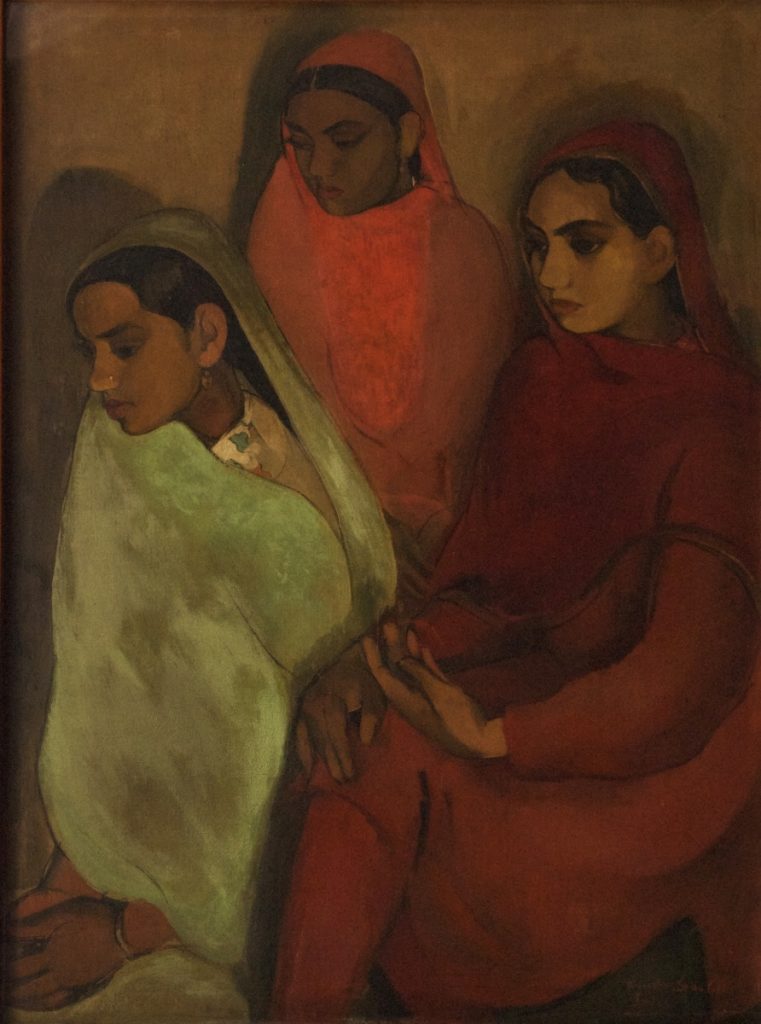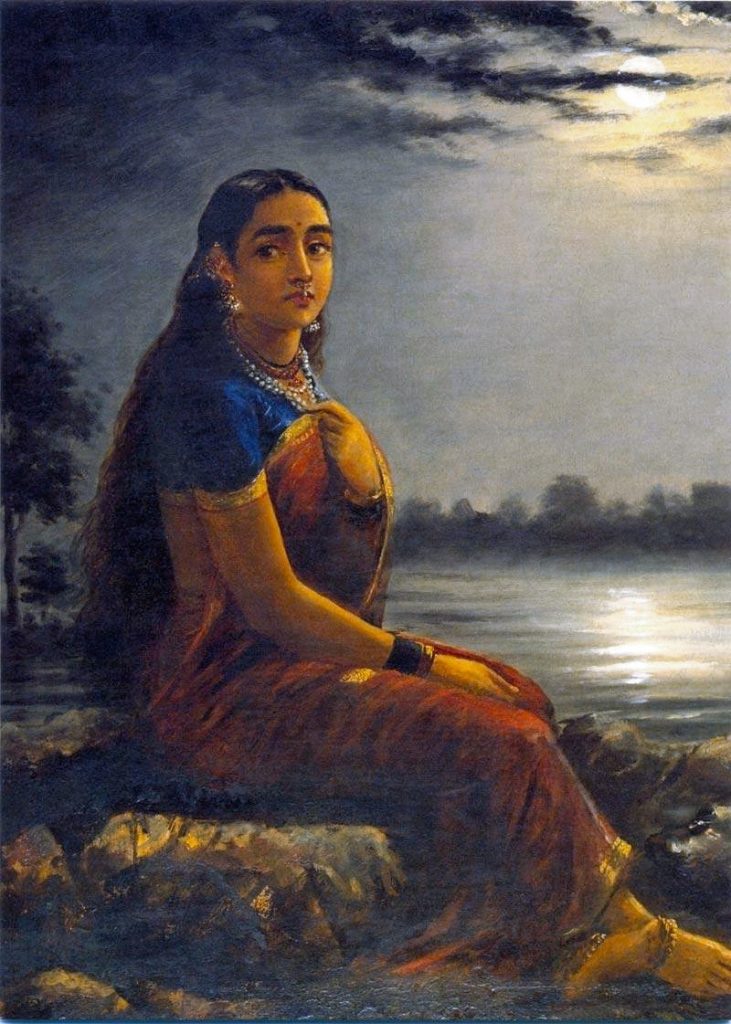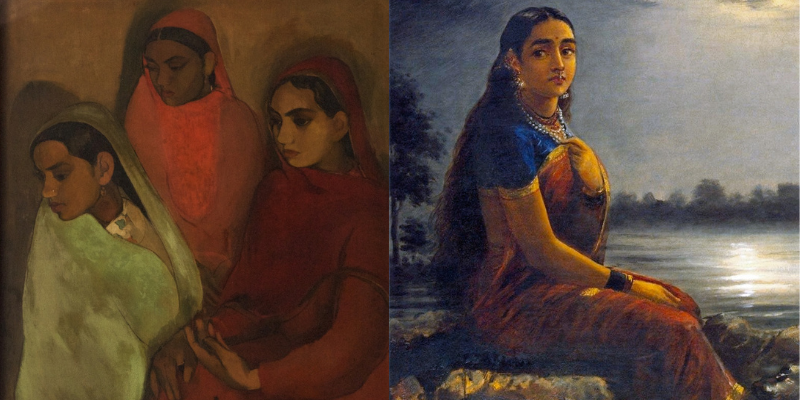Contemporary Indian Painting is the art that has been and continues to be created during our lifetimes. This is a form of art that originated around the 1960’s or 1970s and continues to exist to date. This art is emerging day by day. Both established and upcoming artists are coming up with innovative ideas. It depicts how Indian artists are no more confined to a particular medium of oil on canvas or watercolour on paper as they no more have fear to lose their inherent strength and willingness to experiment; rather they are more enthusiastic and keen to explore new ideas and concepts. New media are coming and traditional media continues to boom. It seems that ordinary media and elements are being reinvented and redefined to an unusual extent.

Courtesy Google Arts and Culture
Broadly speaking, the essential characteristics of modern or contemporary art are a certain freedom from invention, the acceptance of an eclectic approach which has placed artistic expression in the international perspective as against the regional, a positive elevation of technique which has become both proliferous and supreme, and the emergence of the artist as a distinct individual.
Many people consider modern art as a forbidding, if not forbidden, territory. It is not, and no field of human achievement is. The best way of dealing with the unfamiliar is to face it squarely. All that is necessary is will, perseverence and reasonable constant exposure or confrontation.
Towards the close of the nineteenth century, Indian painting, as an extension of the Indian miniature painting, snapped and fell on the decline and degenerated into feeble and unfelt imitation largely due to historical reasons, both political and sociological, resulting in the creation of a lacuna which was not filled until the early years of the twentieth century, and even then not truly. There was only some minor artistic expression in the intervening period by way of the ‘Bazar’ and ‘Company’ styles of painting, apart from the more substantial folk forms which were alive in many parts of the country.
Western concept of Naturalism
Then followed the newly ushered Western concept of naturalism, the foremost exponent of which was Raja Ravi Verma. This was without parallel in the entire annals of Indian Art notwithstanding some occasional references in Indian literature of the idea of ‘likeness’. An attempt to stem this cultural morass was made by Abanindranath Tagore under whose inspired leadership came into being a new school of painting which was distinctly nostalgic and romantic to start with. It held its way for well over three decades as the Bengal School of Painting, also called the Renaissance School or the Revivalist School – it was both. Despite its country-wide influence in the early years, the importance of the School declined by the ‘forties’ and now it is as good as dead. While the contribution of the Renaissance School served Painting as an inspired and well-intentioned if not wholly successful link with the past, it has had little consequence even as a ‘take off ground for the subsequent modern movement in art. The origins of modern Indian art lie elsewhere.
The period at the end of the Second World War released unprecedented and altogether new forces and situations, political as well as cultural, which confronted the artist, as much as all of us, with an experience and exposure of great consequence. The period significantly coincided with the independence of the country. With freedom also came unprecedented opportunity. The artist was set upon a general course of modernization and confrontation with the big, wide world, especially with the Western World, with far-reaching consequences. Too far removed as he was from Indian tradition and heritage and emotionally estranged from its true spirit, he absorbed the new experience eagerly too fast and too much. The situation is as valid even to this day and has a ring of historical inevitability. This is just as true of Modern Indian literature and the theatre. In dance, the process of modernization is marginal and in music even less. While the artist learnt much from this experience, he unconsciously entered the race towards a new international concept in art. One might regard this as a typical characteristic of a newborn old nation and part of its initial predicament. Our attitude to life in general, and the various approaches to solve an infinite variety of problems are similarly oriented.

Courtesy Wikimedia Commons
Characteristics of Contemporary Indian Painting
A major characteristic of contemporary Indian Painting is that the technique and method have acquired a new significance. The form came to be regarded as a separate entity and with its increasing emphasis it subordinated the content in a work of art. This was wholly true until recently and is true somewhat even now. The form was not regarded as a vehicle for content. In fact, the position was reversed. And the means, inspired and developed on extraneous elements, rendered the technique very complex and brought in its train a new aesthetic. The painter has gained a great deal on the visual and sensory level: particularly in regard to the use of colour, in the concept of design and structure, texture, and in the employment, of unconventional materials. A painting stood or fell in terms of colour, compositional contrivance or sheer texture. Art on the whole acquired an autonomy of its own and the artist an individual status as never before.
On the other hand, we have lost the time-honoured unified concept of art, the modern artistic manifestation having clearly taken a turn where any one of the elements that once made art a wholesome entity now claimed extraordinary attention to the partial or total exclusion of the rest. With the rise of individualism and the consequent isolation of the artist ideologically, there is the new problem of the lack of a real rapport of the artist with the people. The predicament is aggravated by the absence of any appreciable and specific interrelation between the artist and society. While it may be argued up to a degree that this characteristic predicament of contemporary art is the result of a sociological compulsion, and that present-day art is reflective of the chaotic conditions of contemporary society, one cannot but notice the unfortunate hiatus between the artist and society. The impact of horizons beyond one’s own has its salutary aspects and singular validity in the light of increasing international spirit of the present times. The easy transport with other peoples and ideas is salutary particularly in respect of technique and material, in the sharing of new ideologies and in investing art and artists with a new status.
Once more, at the end of a quarter century of eclecticism and experimentation, there is some evidence of a pent-up feeling and of an attempt to retrace and take stock of things. The experience and knowledge, invaluable as it is, are being shifted and assessed. As against the over-bearing, non-descript anomaly of internationalism, there is an attempt to look for an alternative source of inspiration which, while it has to be contemporary may well spring from one’s own soil and be in tune with one’s environment.
Major trends
Contemporary Indian art has travelled a long way since the days of Ravi Verma, Abanindranath Tagore and his followers and even Amrita Sher-Gil. Broadly, the pattern followed is this. Almost every artist of note began with one kind of representational or figurative art or the other tinged with impressionism, expressionism or post-expressionism. The irksome relationship between form and content was generally kept at a complementary level. Then through various stages of elimination and simplifications, through cubism, abstraction and a variety of expressionistic trends, the artists reached near non-figurative and totally non-figurative levels. The ‘pop’ and the ‘op’, the minimal and anti-art have really not caught the fancy of our artists, except for very minor aberrations. And, having reached the dead and cold abstraction, the only way open is to sit back and reflect. This copy-book pattern has been followed by a great number of artists, including senior and established ones. As a reaction to this journey into nothing, there are three new major trends: projection of the disturbed social unrest and instability with the predicament of man as the main theme; an interest in Indian thought and metaphysics, manifested in the so-called ‘tantric’ paintings and in paintings with symbolical import: and more than these two trends is the new interest in vague surrealist approaches and in fantasy. More important than all this, is the fact that nobody now talks of the conflict between form and content or technique and expression.
Contemporary Indian paintings have a beauty that harnesses the power of three-dimensional spaces, which gives an impact through its sheer size. Indian sculptors are coming up with innovative ideas rather than using traditional mediums. There are so many exciting mediums the sculptors work with like Subodh Gupta who works with stainless steel utensils. The sculptures which the sculptors are coming up with have a challenge in terms of cost, logistics, size and space. A good space is required for the sculptures.
New Media Art
New media art is another type of art that is very exciting and radically different from what’s been done before. It includes remarkable features of art landscapes and shows how it has been challenging with the conventions and traditions of existing art. The most important feature that differentiates traditional media from new media is that it requires close interaction with the viewer. It gives the opportunity to create more personalized works for the viewer, wherein he also controls the artwork to a certain extent.
There is a long way to go until contemporary art reaches its maturity, it’s only 70-80 years old. This maturity process is influenced by the Indian and International markets.





